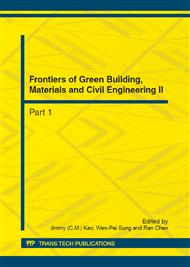[1]
Chen Y., Lundqvist P. and Johansson A., 2006. A comparative study of the carbon dioxide transcritical power cycle compared with an Organic Rankine Cycle with R123 as working fluid in waste heat recovery. Applied Thermal Engineering 26, 2142-2147
DOI: 10.1016/j.applthermaleng.2006.04.009
Google Scholar
[2]
Hung T. C., 2001. Waste heat recovery of organic Rankine cycle using dry fluids, Energy Conversion and Management 42, 539-553
DOI: 10.1016/s0196-8904(00)00081-9
Google Scholar
[3]
Wei D. H., Lu X. S. and Lu Z., 2008. Dynamic modeling and simulation of an organic Rankine Cycle (ORC) system for waste heat recovery, Applied Thermal Engineering 28, 1216-1224
DOI: 10.1016/j.applthermaleng.2007.07.019
Google Scholar
[4]
Dejfors C., Thorin E., Svedberg G., 1998. Ammonia-water power cycles for direct-fired cogeneration applications, Energy Conversion and Manage 39, 1675-1681
DOI: 10.1016/s0196-8904(98)00087-9
Google Scholar
[5]
Hung T. C., Shai T. Y. And Wang S. K., 1997. A review of Organic Rankine Cycles (ORCs) for the recovery of low-grade waste heat, Energy 22, 661-667
DOI: 10.1016/s0360-5442(96)00165-x
Google Scholar
[6]
House P. A., 1976. Helical-rotor expander applications for geothermal energy conversion, UCRL-52043
DOI: 10.2172/7177467
Google Scholar
[7]
Wu D.W. and Wang R.Z., 2006. Combined cooling, heating and power: a review, Progress in Energy and Combustion 32, 459-495
DOI: 10.1016/j.pecs.2006.02.001
Google Scholar
[8]
Smith I. K., Stosic N. and Kovacevic A., 1996. Development of the trilateral flash cycle system. Part 3: The design of high efficiency two-phase screw expanders, Proceedings of the Institution of Mechanical Engineeers. Part A, 210 (A2), 75-93.
DOI: 10.1243/pime_proc_1996_210_010_02
Google Scholar
[9]
Bai F. F. and Zhang Z. X., 2008. Integration of Low-level waste heat recovery and liquefied nature gas cold energy utilization, Chinese Journal of Chemical Engineering 16, 95-99
DOI: 10.1016/s1004-9541(08)60044-0
Google Scholar


